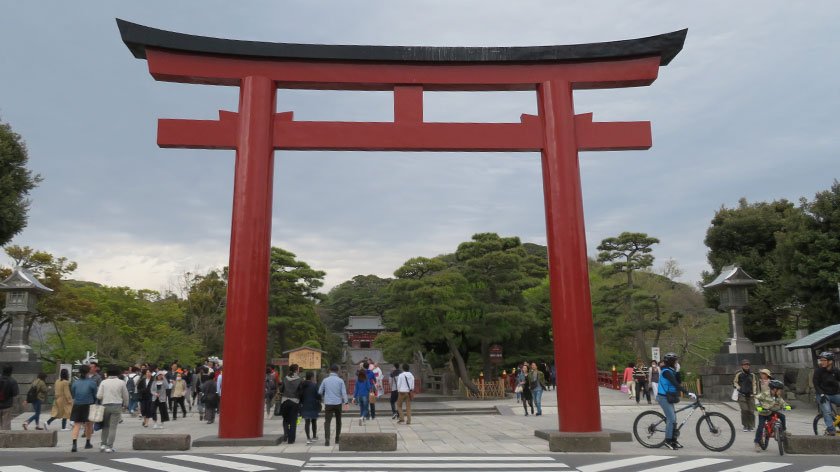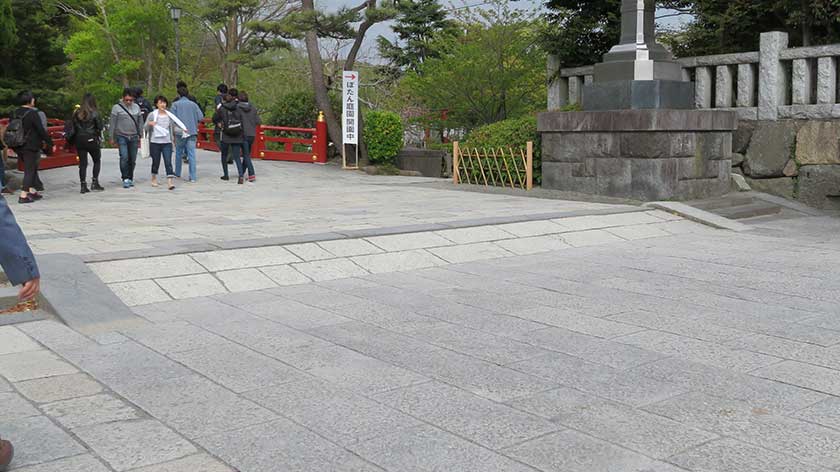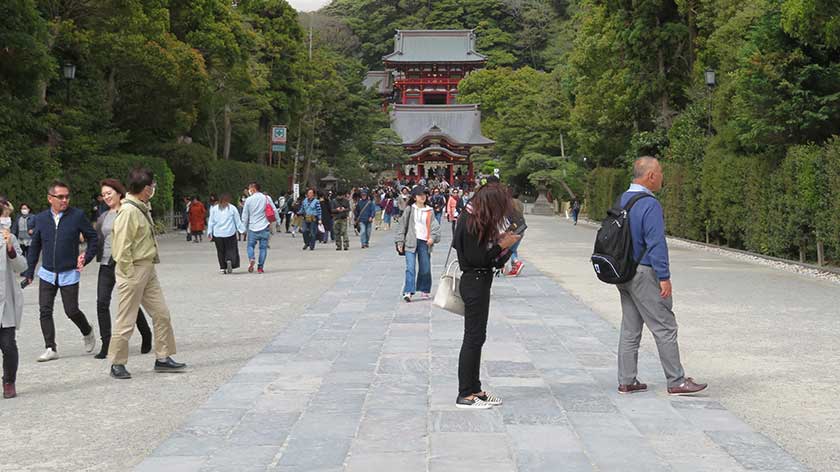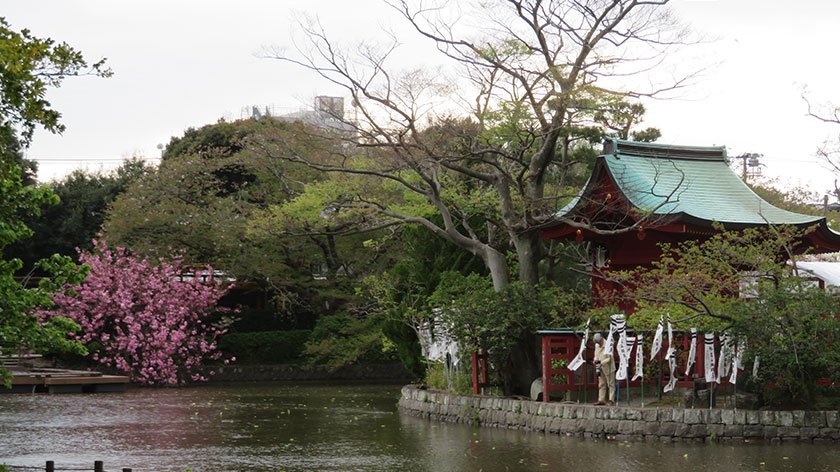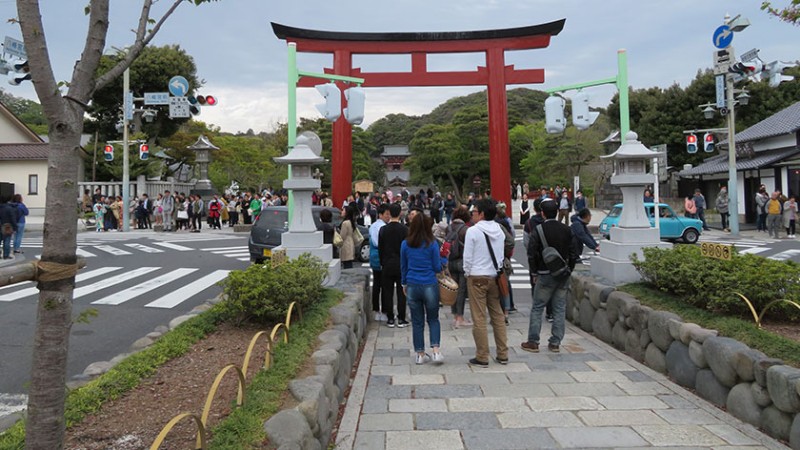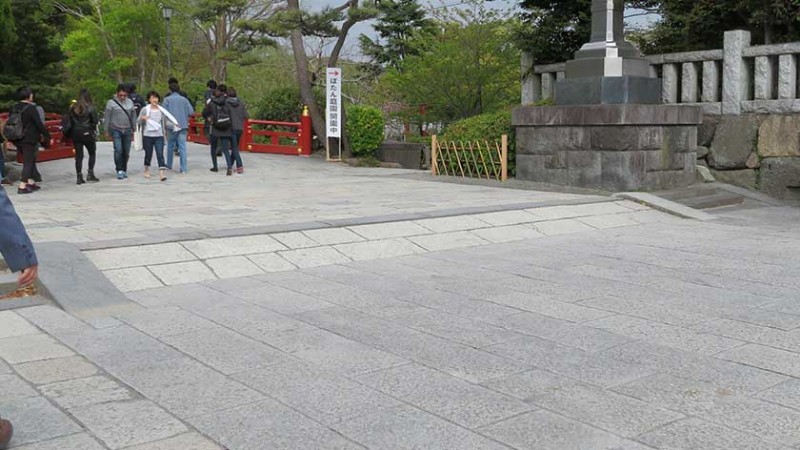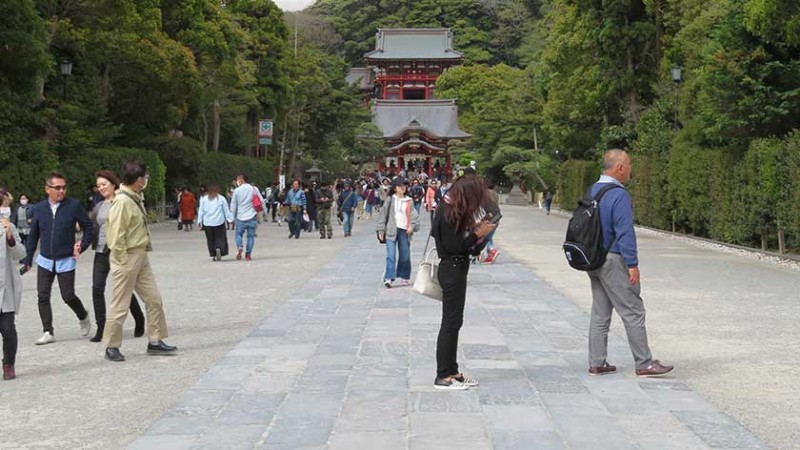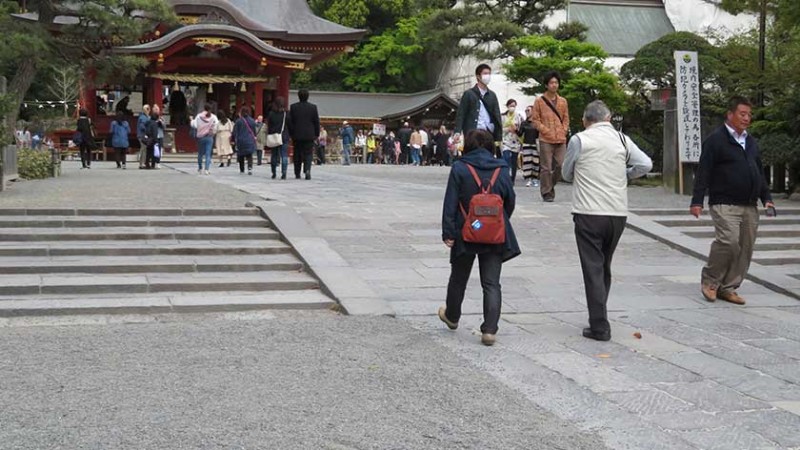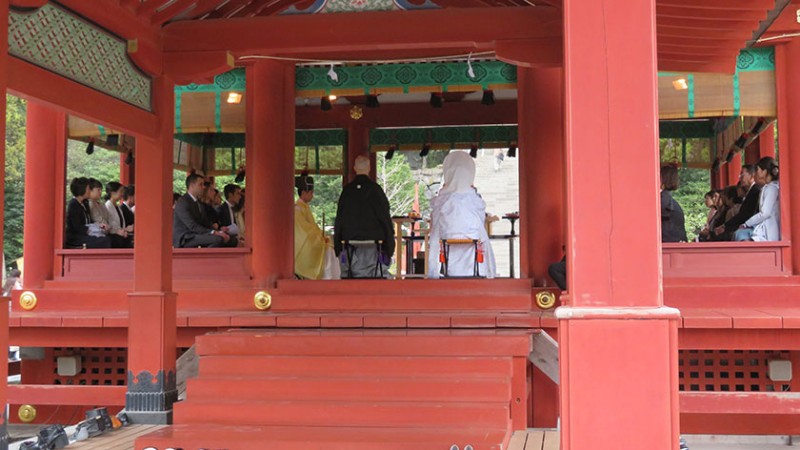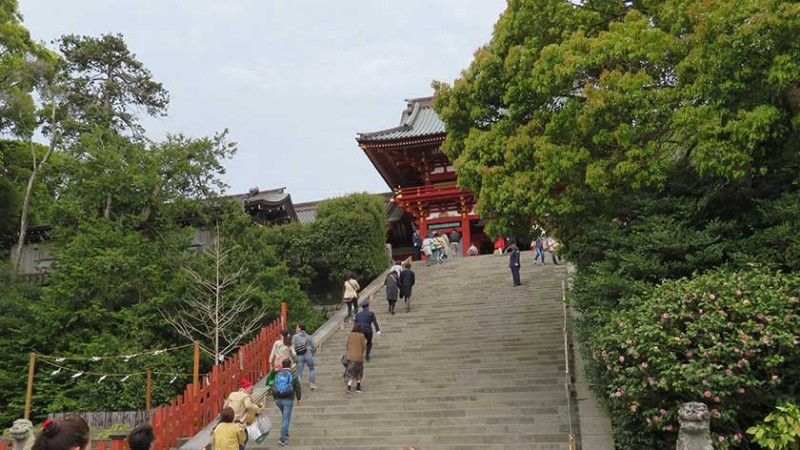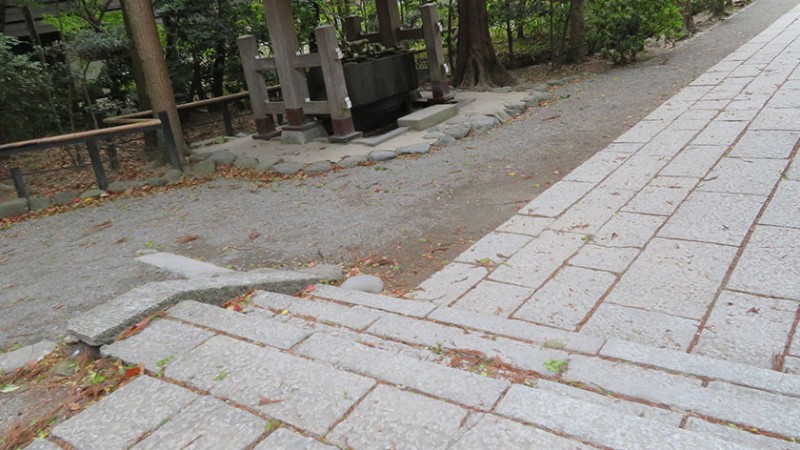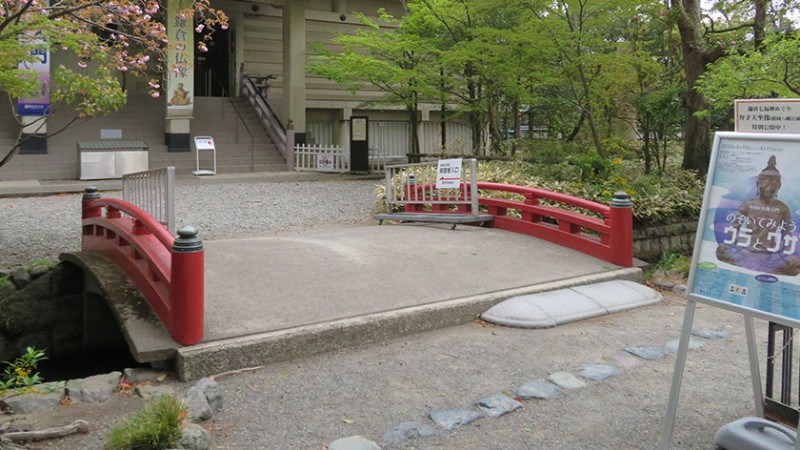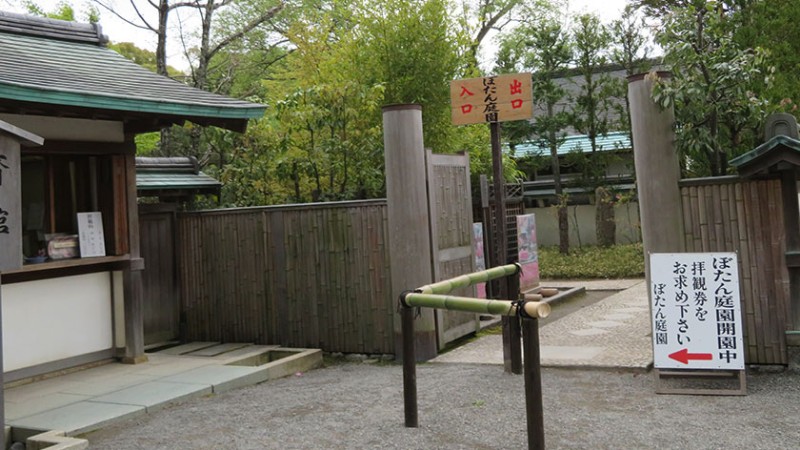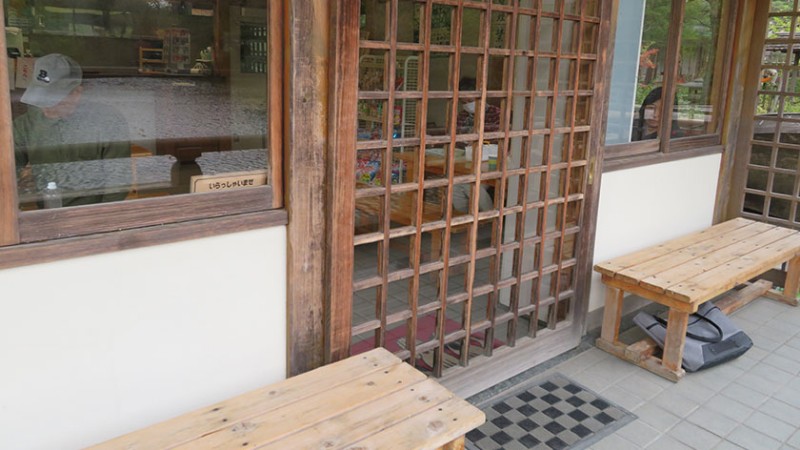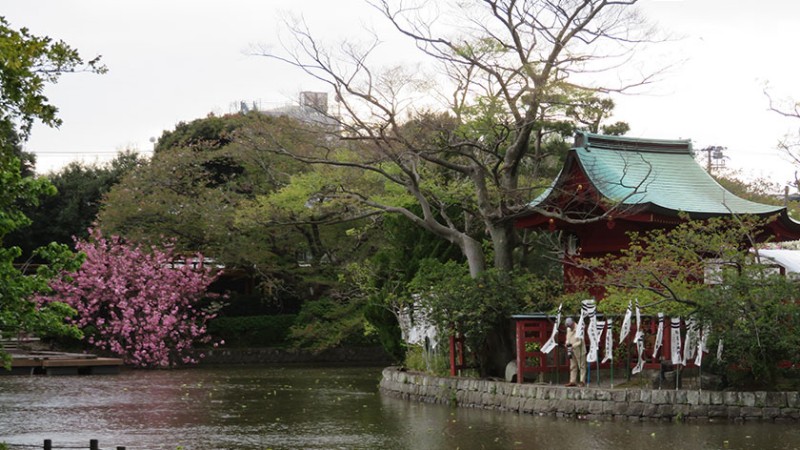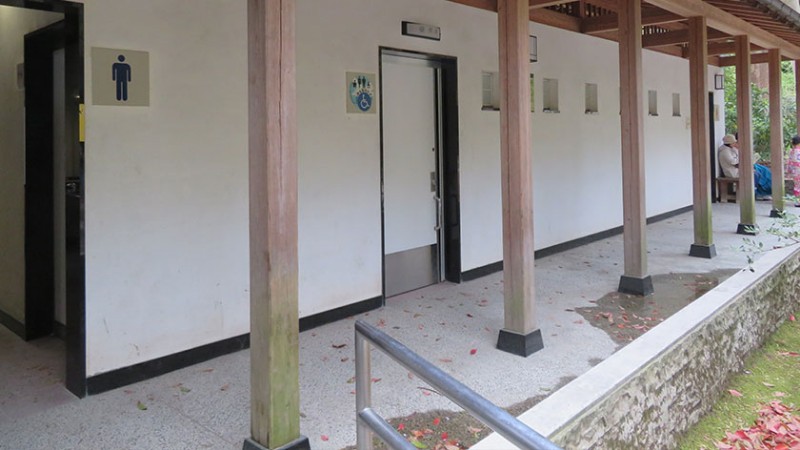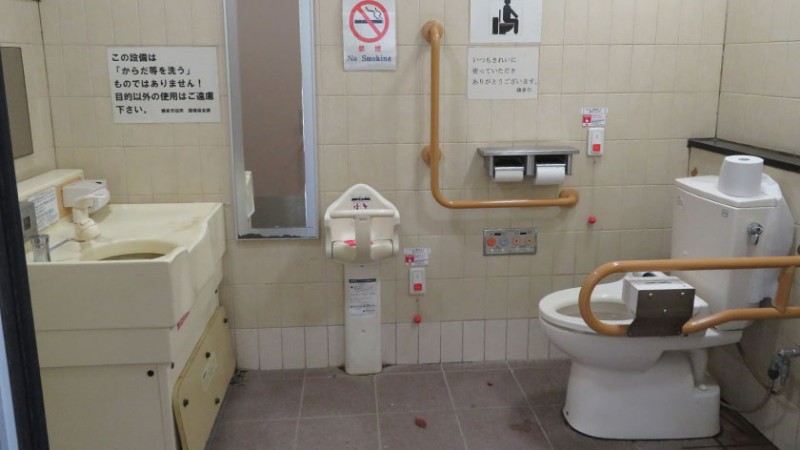- Overview

Tsuragaoka Hachimangu is one of Kamakura’s defining landmarks, and while it is mostly not wheelchair accessible, it is still worth seeing.
Background Information
Tsurugaoka Hachimangu is the most important Shinto shrine in the city of Kamakura, and is at the geographical and cultural center of the city of Kamakura. It is the venue of many of Kamakura’s most important festivals
The shrine was originally built in 1063 as a branch of Iwashimizu Shrine in Zaimokuza. It is dedicated to the Emperor Ojin, (deified with the name Hachiman, god of warriors), his mother Empress Jingu and his wife Hime-gami. Minamoto no Yoritomo, the founder of the Kamakura shogunate, moved the shrine to its present location in 1191 and invited Hachiman to reside in the new location to protect his government. Ironically, Sanetomo, last of Minamoto no Yoritomo’s sons, was assassinated by his nephew as he descended the main steps after a ceremony.
The shrine is at the end of a long, wide approach that starts at Kamakura’s waterfront and passes through the entire city center.
The shrine complex has a number of buildings. A Maiden, a stage for dance and musical performances, is a great place to see traditional wedding ceremonies. The main hall stands on a terrace at the top of a wide stairway.

There are also two ponds, and garden known for its peonies that can be visited in spring and winter for 500 yen.
The shrine grounds are open year-round from 5:00 am (6:00 am from October to March) until 9:00 pm, entrance until 8:30 pm. During the New Years celebrations (January 1-3rd) the shrine is open 24 hours.
Getting There
Tsuragaoka Hachimangu is a 10-15 minute walk from Kamakura Station which is wheelchair accessible.
There is a cherry-tree lined path leading to the shrine. While some areas only have steps, the entrances to the path at the crossing lights have ramps. Those using manual wheelchairs may need a bit of a push to get up though, as they are a bit steep.

Accessibility
The pathway leading up to the shrine is accessible. Once at the shrine, there is a short, but steep ramp into the grounds.

The main path is made of flagstone with gravel on either side.

Another ramp leads up to the Maiden.

Unfortunately, due to a huge flight of stairs, the main hall is completely inaccessible to those with mobility impairments. As are the museums.

The rest area near the peony garden is accessible, but parts of the garden itself is not very wheelchair friendly due to many bumpy paths. It may not be worth the entrance fee and some of the garden can be seen from across the pond.

Off to the left side of the entrance of the shrine (when looking from the street), is a cafe called Cafe Kazenomori. The entrance is flat and tables are at a good height for power wheelchair users. It offers a nice view of the nearby pond and a few of the bridges. Since many tea houses in Japan are not accessible, wheelchair users should be sure to visit this cafe for some green tea.

There is a wheelchair accessible toilet available.

Conclusion
While a lot of the buildings are not accessible by those in wheelchairs or with mobility impairments, Tsuragaoka Hachimangu is one of the most important buildings in Kamakura and still worth visiting. The main shrine can be seen from the lower area, and the Maiden is often busy with weddings – so there is still a lot to see.
- Access
No Records Found
Sorry, no records were found. Please adjust your search criteria and try again.
Google Map Not Loaded
Sorry, unable to load Google Maps API.
- Photos
- Reviews
- Nearby Hotels
No listings were found matching your selection.
Have a question?
We try our best to provide information to a wide audience. But everyone has different needs.
If you have some specific questions about this listing, come join us on Tabifolk in the Japan group and we will get you the information you need!
Share your pictures of your trip or look up the accessibility of your next location with SIM cards or pocket WiFi!
